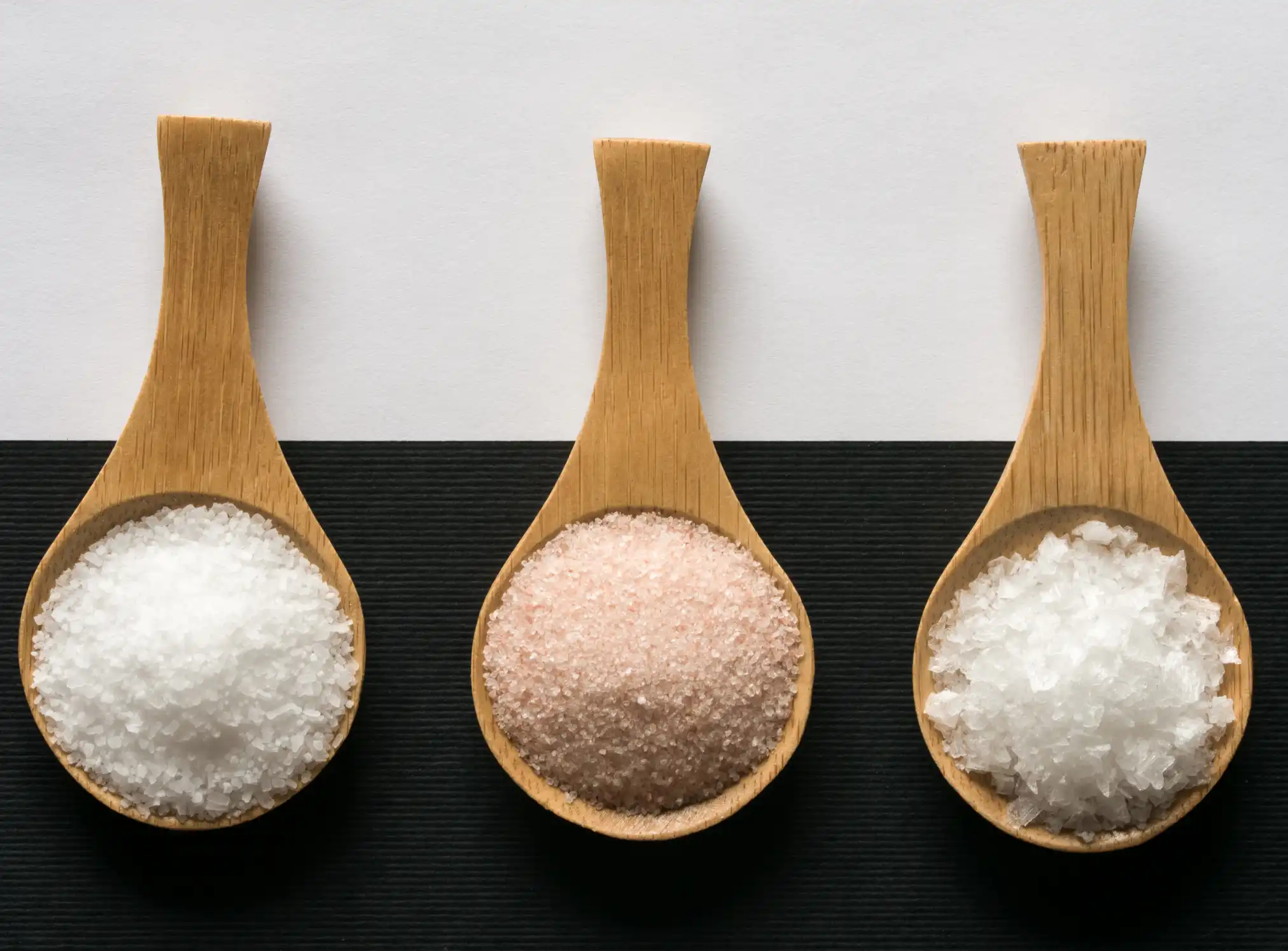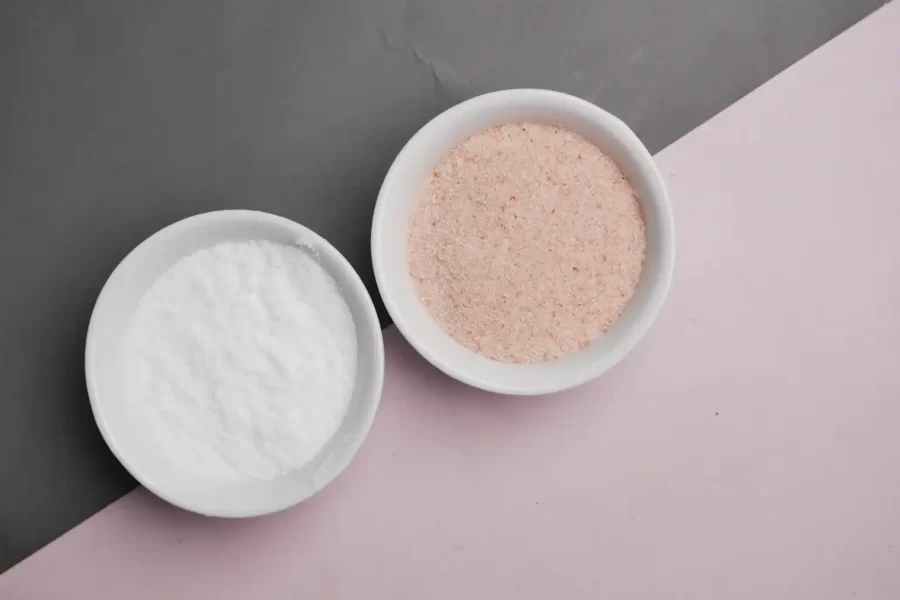In the vast expanse of culinary choices, salt reigns supreme. Among the myriad options available, Pink Himalayan salt and table salt stand out as popular contenders. However, understanding the disparities between these two salts is essential for informed decision-making. This extended blog post will delve deeper into the composition, processing methods, potential health benefits, and culinary applications of Pink Himalayan salt and table salt, offering comprehensive insights into these salty gems.
Composition: Mineral Magic vs. Sodium Dominance
The primary discrepancy lies in their composition. Pink Himalayan salt, a natural mineral salt, is imbued with a plethora of essential minerals and trace elements, including calcium, magnesium, potassium, and iron. This mineral-rich symphony not only contributes to its distinctive pink hue but also offers potential health benefits. In contrast, table salt undergoes extensive refinement processes, which strip away most of these essential minerals, leaving behind primarily sodium chloride. Consequently, table salt tends to have a higher sodium content and lacks the diverse mineral profile found in Pink Himalayan salt.

Processing Methods: Hand-Harvested vs. Industrially Refined
The journey from source to table differs significantly between Pink Himalayan salt and table salt. Pink Himalayan salt undergoes a more natural and traditional harvesting process. It is hand-mined from ancient sea salt deposits nestled in the Himalayan Mountains and undergoes minimal processing, typically involving crushing or grinding into granules. This gentle processing method helps preserve its natural mineral composition and vibrant color. In contrast, table salt follows an industrial trajectory, undergoing bleaching, additives, and other processing steps to achieve its fine texture and uniform appearance. This industrial refinement sacrifices the natural mineral content present in Pink Himalayan salt, resulting in a product that is primarily sodium chloride.
Flavor & Taste: Subtle Symphony vs. Salty Punch
One of the most noticeable differences between Pink Himalayan salt and table salt lies in their flavor profiles. Pink Himalayan salt offers a nuanced and complex taste experience, thanks to its diverse mineral composition. Its milder flavor subtly enhances the natural taste of food without overwhelming it. On the other hand, table salt, with its higher sodium content, delivers a more intense salty punch, which is readily discernible on the palate. The choice between these salts can significantly impact the flavor profile of dishes, making it essential to consider their distinct taste characteristics when cooking or seasoning.

Texture & Grain Size: Crunchy Crystals vs. Dissolving Finesse
In addition to flavor, the texture and grain size of Pink Himalayan salt and table salt differ significantly. Pink Himalayan salt is known for its larger, coarser crystals, which add a delightful crunch and visual appeal to dishes. These robust crystals make Pink Himalayan salt ideal for use as a finishing salt or for grinding in salt mills. In contrast, table salt is finely ground, with a much smaller grain size that readily dissolves when mixed with food or liquids. Its fine texture makes it suitable for baking, cooking, and everyday seasoning, where a uniform distribution of salt is desired.
Iodine: Addressing the Essential Micronutrient
Iodine, an essential micronutrient crucial for thyroid function and overall health, is another factor to consider when comparing Pink Himalayan salt and table salt. In some regions, table salt is fortified with iodine to prevent iodine deficiency disorders. This iodine fortification is particularly important in areas where iodine-rich foods are not readily available. In contrast, Pink Himalayan salt naturally contains trace amounts of iodine, although not typically in significant quantities. Individuals concerned about iodine intake should carefully consider their salt choice and may need to explore alternative dietary sources or iodine supplements to meet their nutritional needs adequately.
Culinary & Decorative Applications: Beyond Seasoning
Both Pink Himalayan salt and table salt boast diverse culinary applications beyond simple seasoning. Pink Himalayan salt’s distinctive pink hue and unique flavor make it a popular choice for finishing dishes, creating visually stunning salt slabs, or crafting gourmet salts infused with herbs or spices. Its aesthetic appeal extends beyond the kitchen, with Pink Himalayan salt finding its way into decorative items such as lamps and bath salts, adding a touch of elegance and potential wellness benefits to living spaces. Table salt, with its finer texture and higher saltiness, remains a staple in baking, cooking, and everyday seasoning, offering versatility and convenience in various culinary endeavors.

Beyond the Basics: Exploring Additional Uses
The versatility of Pink Himalayan salt extends far beyond the realm of culinary applications. Consider exploring these additional uses:
DIY Bath Salts:
Indulge in a luxurious spa experience by creating DIY bath salts using Pink Himalayan salt, essential oils, and aromatic herbs. Soak away stress and tension while nourishing your skin with the mineral-rich goodness of Pink Himalayan salt.
Scalp Scrubs:
Revitalize your scalp and promote healthy hair growth with a Pink Himalayan salt scalp scrub. Combine Pink Himalayan salt with natural oils like coconut or jojoba oil to create a gentle exfoliating scrub that removes buildup, stimulates circulation, and leaves your scalp feeling refreshed and rejuvenated.
Himalayan Salt Stones:
Enhance massage therapy sessions with the soothing warmth and therapeutic benefits of Himalayan salt stones. These smooth, heated stones are used to massage the body, promoting relaxation, relieving muscle tension, and balancing energy flow. Incorporating Himalayan salt stones into massage treatments can elevate the overall experience and provide additional health benefits.

Making an Informed Choice
Understanding the disparities between Pink Himalayan salt and table salt empowers individuals to make informed decisions regarding their dietary and culinary preferences. While Pink Himalayan salt offers a unique mineral composition, subtle flavor profile, and aesthetic appeal, table salt remains a versatile and readily available option for everyday seasoning and cooking. It is essential to consider factors such as taste, texture, iodine content, and culinary applications when selecting the appropriate salt for a given recipe or dietary regimen. Additionally, consulting with a healthcare professional can provide personalized guidance on salt consumption and overall nutrition, particularly for individuals with specific dietary restrictions or health concerns.
Remember
Sustainability Matters:
When choosing Pink Himalayan salt, opt for ethically sourced and sustainably harvested brands to support environmentally responsible practices.
Dietary Needs:
Individuals with specific dietary restrictions or health concerns related to sodium intake should consult with a healthcare professional to determine the most suitable salt options for their needs.
Experiment & Enjoy:
Explore the diverse world of salts and their culinary applications to discover new flavors, textures, and cooking techniques. Embrace culinary creativity and savor the rich tapestry of flavors that different salts can offer.
By venturing beyond the confines of the salt shaker and embracing the diverse world of salts, individuals can unlock a realm of culinary creativity, flavor exploration, and potential wellness benefits. Whether you prefer the mineral magic of Pink Himalayan salt or the versatility of table salt, remember that knowledge is power, and the perfect pinch of salt awaits to elevate your culinary creations and enrich your dining experiences. So, the next time you reach for salt, savor the moment and relish the opportunity to enhance your culinary journey with the myriad flavors and textures that salt has to offer.



